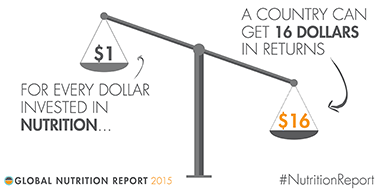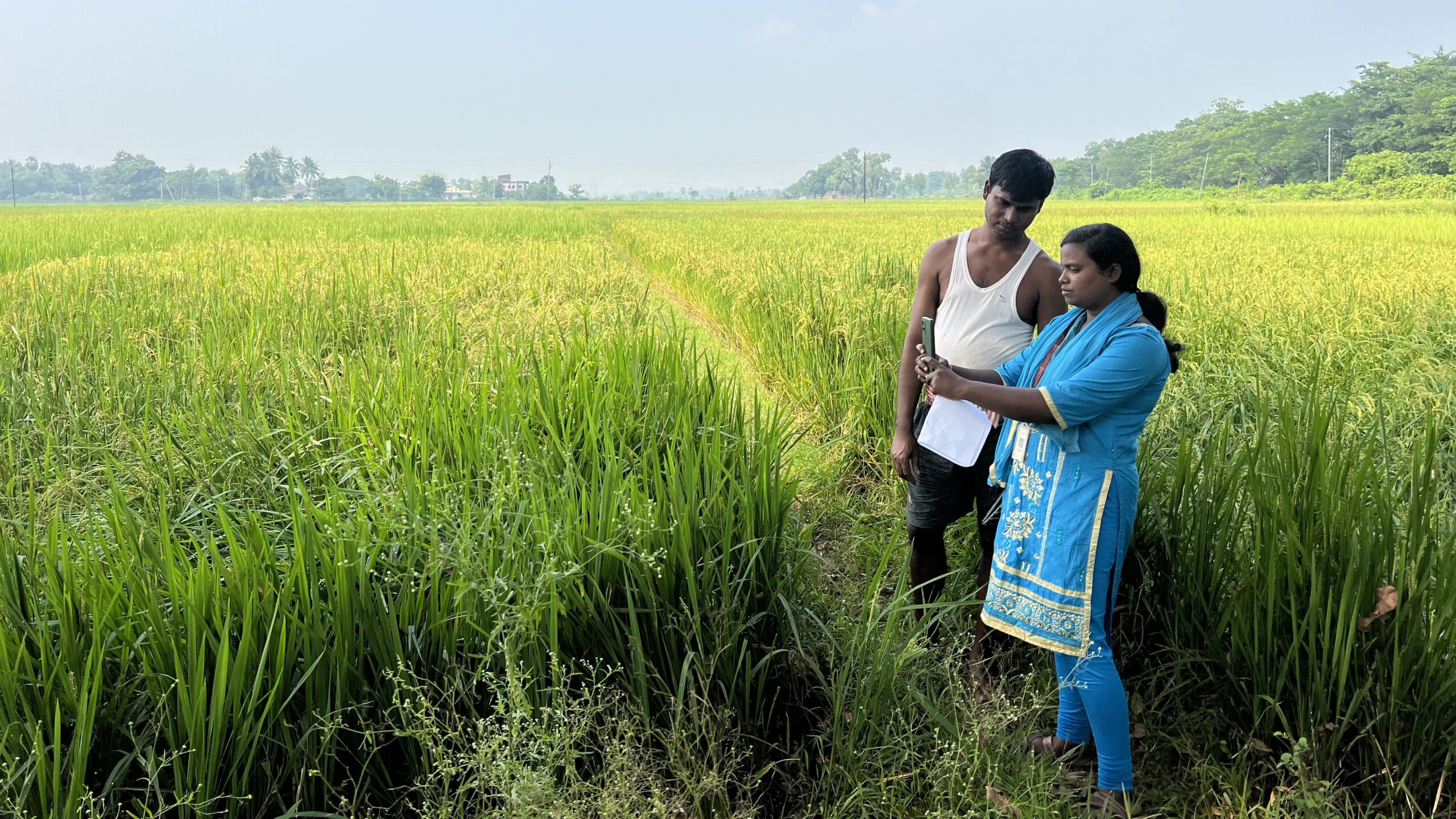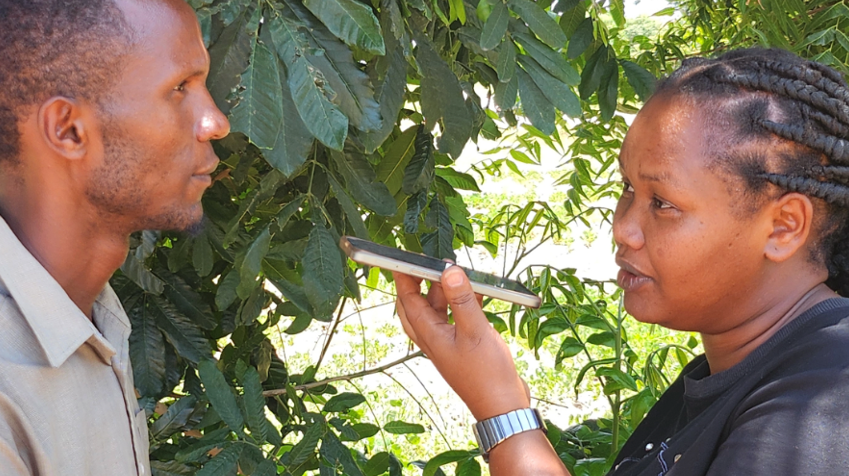By Asma Lateef
Last Friday, I had the privilege to participate in the Washington DC launch of the 2015 Global Nutrition Report (GNR). It is only the second GNR, yet it has come to be an important and anticipated contribution to the work of the nutrition community and to nutrition advocacy. This year’s report went further than the 2014 GNR to focus on all forms of malnutrition—providing this information in one place will raise awareness, shape policies, and improve policy coherence. The launch event touched on important themes—the rate of return on nutrition investments, domestic resource mobilization for nutrition, taking a food systems approach, strengthening the evidence base and the role of regulations, labelling and incentives. This marks an important step forward. No longer is the conversation just about why nutrition but the important question of how. So this year’s report gave me some reasons to be hopeful, not only because of what the report says—the new data and analysis—but also because the report itself is driving progress. Specifically, the following observations from the report gave me hope:
1. Countries are making progress towards the WHA nutrition targets.
Nearly all countries for which data are available across targets are making progress on one or more World Health Assembly (WHA) nutrition targets. The number of countries on track to achieve the stunting target to reduce by 40 percent the number of children under five who are stunted increased from 23 to 39 between 2014 and 2015. Some of this increase is due to the availability of new or better data—also a reason for hope. For example, new data from India suggest that the rate of decline in stunting has doubled since 2006, and stunting has fallen from 48 percent to 39 percent. More promising, stunting is falling in all states in India, although not all at the same rate.
Clearly, progress is slow and mixed, but rapid change is possible.
2. Funding to scale up nutrition has increased.
Donor investments in nutrition specific and nutrition sensitive actions have increased. Nutrition now accounts for four percent of overseas development assistance (ODA), at around $5 billion. Countries are beginning to unpack their own spending on nutrition—giving a clearer picture of the resources available. There is a lot more to be learned about the effectiveness of these investments and, of course, the resources pale in comparison to need. But we now know more about how much is being spent, and on what, than ever before.
3. Nutrition funding is targeted.
The GNR finds that the limited resources for nutrition are generally going to countries where the need is the greatest—that ODA is being spent where rates of childhood stunting and wasting are highest.
4. The economic benefits of nutrition are better understood.
The GNR cites new data from Brazil, Malawi, the DRC, Mali, Nigeria, and Togo that show the returns from breastfeeding and scaling up nutrition-specific interventions (see figure at right).
5. The Sustainable Development Goals include nutrition at the goal and target level.
The timing of the DC GNR launch was auspicious, coinciding with the formal adoption of the Sustainable Development Goals (SDGs) at the opening of the United Nations Sustainable Development Summit. The second sustainable development goal aims to end hunger, achieve food security and improved nutrition, and promote sustainable agriculture. This goal includes a target to end malnutrition in all its forms, including achieving the WHA targets on stunting and wasting by 2025. The inclusion of nutrition in the SDGs in this way brings it into the new global development framework. It is a substantial improvement over the Millennium Development Goals that focused on caloric intake and underweight but not on nutrition. Nutrition is also related to SDG targets to end preventable child deaths and reduce maternal mortality but the remaining four WHA targets are not explicitly included anywhere in the SDG framework. It will be important for advocates to push for SDG indicators to build upon the set of internationally agreed WHA nutrition targets by including all six as indicators and to include additional indicators on women’s dietary diversity and the allocation of national budgets to nutrition programs.
Asma Lateef is Director at Bread for the World. She currently serves on the steering committee of the Scaling Up Nutrition Movement’s Civil Society Network and is a member of the executive committee of the 1,000 Days Advocacy Working Group. She is co-chair of the post-2015 working group of the international coalition for advocacy on nutrition.







